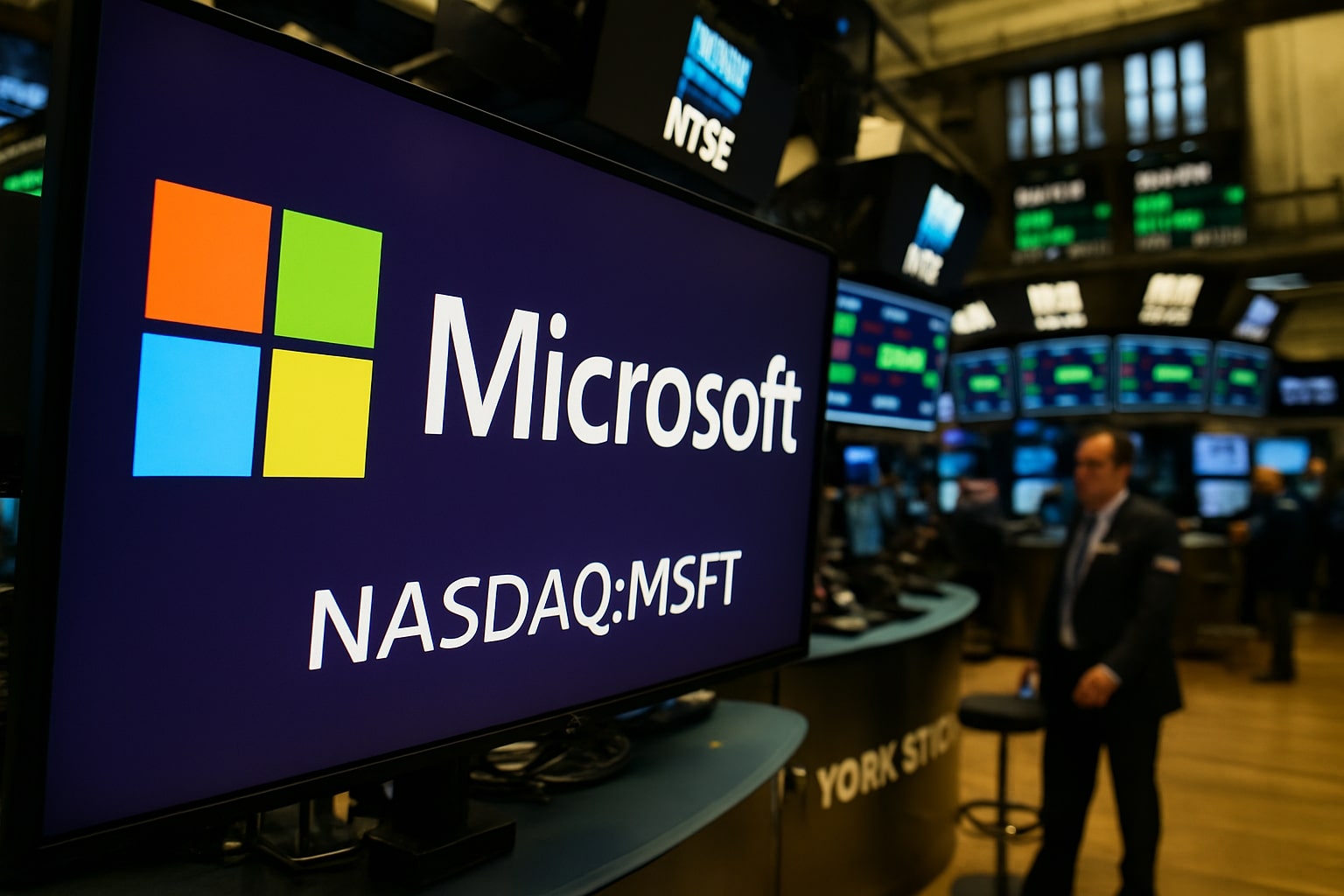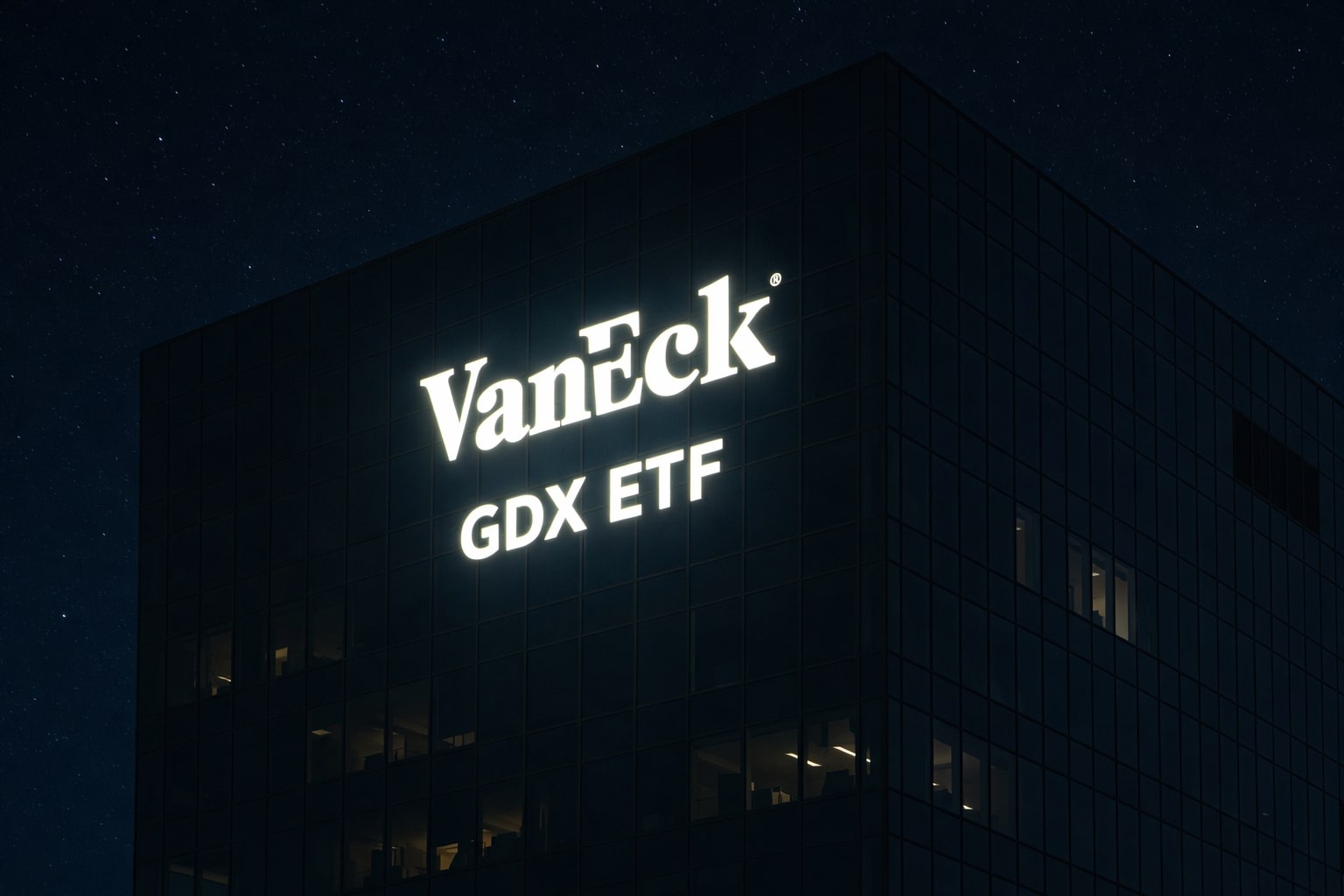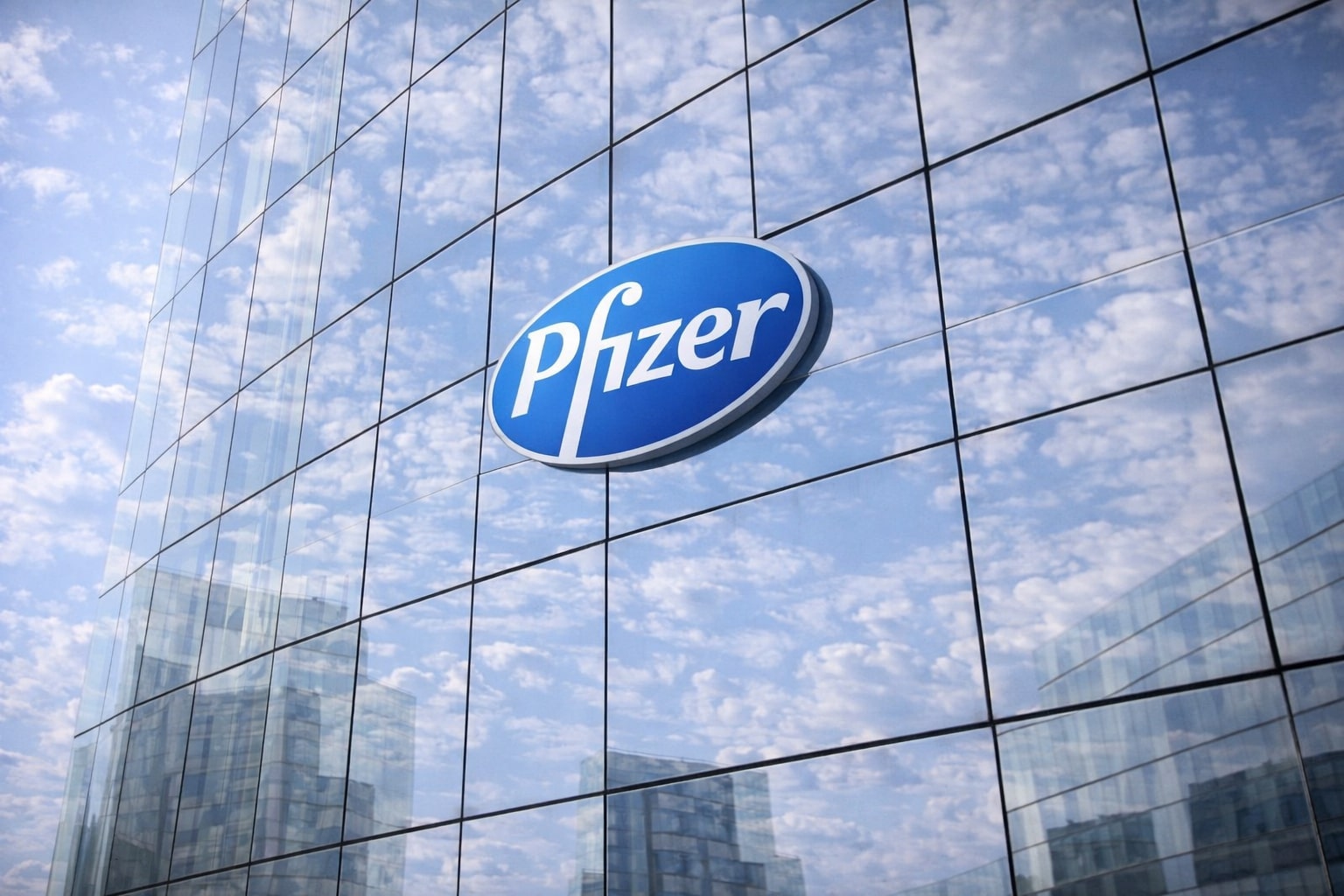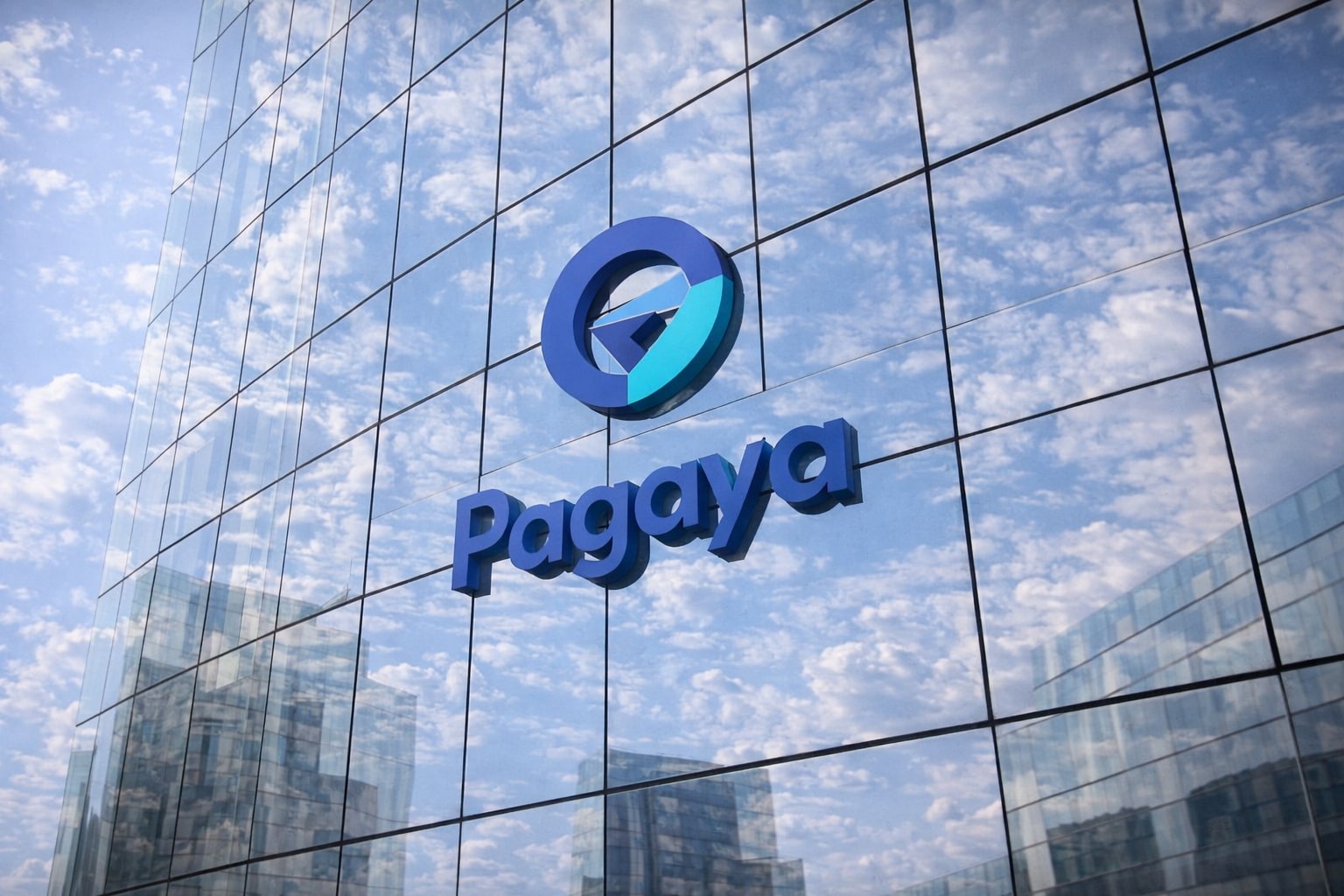
Microsoft (NASDAQ:MSFT) Stock: AI Growth Soars, But Margin Risks Mount in 2025
MSFT’s AI-fueled rally eyes $25B Copilot boost by FY 2026, yet supply chain and chip delays weigh on valuation | That's TradingNEWS
Microsoft (NASDAQ:MSFT) Expands AI Dominance While Margin Pressures and Chip Delays Cloud the Valuation Picture
Microsoft's (NASDAQ:MSFT) share price continues to climb amid a relentless push into generative AI, with the stock recently surging more than 23% year-to-date—well ahead of the S&P 500’s 3% gain over the same period. The engine of this performance is clearly Microsoft's accelerating AI monetization, with AI-driven revenue up 175% YoY in its latest quarter. This growth is not driven by speculative narratives, but by real adoption across Azure, GitHub Copilot, Fabric, and Microsoft 365 products. The company is now targeting $25 billion in AI revenue by FY 2026, fueled by enterprise acceleration across verticals.
AI-Powered Azure Expansion Adds $25 Billion Topline Potential for Microsoft (NASDAQ:MSFT)
Azure remains the crown jewel in Microsoft's AI strategy. In Q3 FY 2025, Azure revenue surged 33% YoY (35% in constant currency), with over half of that growth—16 percentage points—coming directly from AI services. Microsoft is not building a new AI segment from scratch; instead, it is embedding Copilot and Fabric into existing services, drastically cutting acquisition costs. GitHub Copilot now exceeds 15 million users, quadrupling in a year, and Microsoft 365 Copilot usage has tripled with expanding paid seat additions. These trends create a high-margin flywheel, reinforcing Microsoft's software-as-a-service dominance. Fabric, Microsoft's data analytics solution, has seen 80% YoY growth in its paid base, now exceeding 21,000 customers.
The breadth of this adoption is validated externally. A Morgan Stanley CIO survey found that 97% of respondents expect to deploy some form of Microsoft AI tools within the next year. Wedbush estimates over 70% of Microsoft’s entire customer base will be using AI-integrated functionality within three years. That level of penetration is rare, even for the world’s largest enterprise software company.
Custom AI Chip Delays and GPU Dependency Create Execution Headwinds for Microsoft (NASDAQ:MSFT)
Despite the bullish narrative, Microsoft faces a critical bottleneck: its reliance on Nvidia and delays in its in-house AI silicon program. CapEx exploded 55% YoY as Microsoft rushed to procure GPU compute power to meet AI demand, with CFO Amy Hood confirming that infrastructure investment will continue rising throughout FY 2026. Meanwhile, internal development of Microsoft's Maia 200 chip (codename Braga) is delayed by over six months, pushing mass production to 2026. The even more advanced "Clea" generation has now slipped beyond 2028. These delays leave Microsoft overly exposed to Nvidia’s pricing and supply dynamics.
Moreover, the OpenAI partnership—once considered a cornerstone of Microsoft’s AI moat—is showing cracks. Reports suggest tension around OpenAI's strategic direction and Microsoft’s reduced influence, including OpenAI’s move to run workloads on Google's TPUs, not just Azure. If the partnership frays further, Microsoft's AI stack risks losing exclusive infrastructure advantages.
This dual dependence is directly weighing on margins. Microsoft Cloud gross margins contracted by three percentage points YoY, the result of massive hardware purchases and Azure buildouts. While Azure revenues are rising, this compression places pressure on Microsoft's ability to expand earnings per share at the same pace.
Microsoft's (NASDAQ:MSFT) Valuation Stretches Against Sector Benchmarks
MSFT currently trades at a P/E of 37.7x, which is 58% above the sector median and notably higher than its own five-year average of 31x. Price-to-sales metrics show even more premium—forward P/S sits at 13.5x, nearly 4x the sector average. For a company this size, that level of optimism means the market is pricing in near-flawless execution. Any macro hiccup, AI chip delay, or partnership issue could trigger a sharp rerating. The valuation spread between forward and trailing multiples is narrowing, signaling the stock has already priced in most of the medium-term AI growth. There’s limited room left for upside surprise without strong acceleration in topline or margin expansion.
Financial Strength Remains Robust Despite Margin Pinch
Microsoft’s Q3 FY 2025 financials remain enviable. Microsoft Cloud revenue jumped from $35.2B to $42.4B YoY (+20%), with double-digit gains despite a slowdown in growth rates. The company’s gross margin sits at 69.07%, 38% above the sector median. EBITDA margin is a towering 55.25%, compared to the sector's 10.58%, reflecting Microsoft's operational efficiency. Revenue expanded 14.13% YoY and EBITDA grew 19.16%, showing margin expansion and high leverage in its business model. These figures confirm Microsoft’s ability to generate durable cash flows, even amid rising costs.
DCF-based valuation analysis projects a fair value of $600.72 per share, implying a 19.3% upside from current levels near $503. Microsoft’s stock is expensive, but its scale and margin profile support that premium—for now.
Azure’s Technical Edge in AI Agent Orchestration Strengthens Microsoft’s Competitive Moat
While AWS and Google Cloud compete on price and raw compute, Microsoft’s Azure is winning on orchestration and integration. Azure Functions and Container Instances allow enterprises to run scalable, event-driven AI agent systems without managing infrastructure. Cosmos DB provides real-time shared memory systems that enable decentralized AI agents to operate globally with consistency. Microsoft’s investments in state persistence, change feed capabilities, and hybrid container deployment are establishing Azure as the platform of choice for multi-agent AI workflows. Open-source compatibility with ONNX, Kubernetes, and Apache Spark enables adoption without vendor lock-in.
Microsoft’s hybrid strategy—open-source front ends with deeply integrated enterprise-grade infrastructure—positions it to dominate AI deployment in high-trust industries like finance, healthcare, and government. The Azure Kubernetes Service (AKS) allows containerized AI agents to scale across public and private clouds, giving flexibility without losing security.
Verdict: HOLD – Microsoft Remains AI Titan, But Execution Risk and Premium Valuation Justify Caution
Microsoft's unmatched AI ecosystem, Azure integration, and enterprise adoption trends keep it in the tech leadership seat. However, mounting CapEx, AI chip delays, OpenAI relationship frictions, and a stretched valuation temper the bullish thesis. The stock has largely priced in the next $25 billion in AI gains. Investors holding NASDAQ:MSFT from lower levels may maintain positions. New entrants should be cautious. Until Microsoft delivers more clarity on chip independence and stabilizes margins, MSFT is a HOLD at current prices around $503, with a fair upside target of $600 contingent on flawless execution.
That's TradingNEWS
Read More
-
GDX ETF at $88 While Gold Tests $4,400: Are Gold Miners Poised for $100?
19.12.2025 · TradingNEWS ArchiveStocks
-
XRP ETF Boom: XRPI at $10.94 and XRPR at $15.49 as XRP-USD Clings to the $1.80–$1.90 Zone
19.12.2025 · TradingNEWS ArchiveCrypto
-
Natural Gas Price Forecast: NG=F Hovering Near $3.92 As Weather, LNG And Storage Collide
19.12.2025 · TradingNEWS ArchiveCommodities
-
USD/JPY Price Forecast - Dollar to Yen Near 157 as BoJ’s 0.75% Rate Hike Backfires on the Yen
19.12.2025 · TradingNEWS ArchiveForex


















